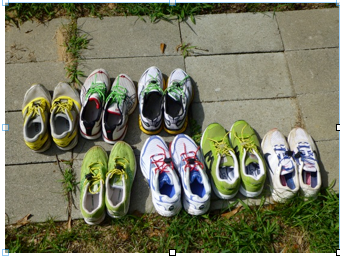Headlines
Sheryl Chatfield Blog: Hurt’s No Good!
By Sheryl Chatfield, HT.com exercise blogger
Exercise is usually viewed as a healthy behavior. Unfortunately, it can disguise some less-than-healthy behaviors including eating disorders or even exercise addictions. Another potential risk with exercise is injury. Various types of activities are associated with varying injuries; in this posting I am going to focus on running injuries.
The simple act of running, inside or outside, can lead to injuries ranging from blisters and irritation (usually from shoes or socks) all of the way to sprains and fractures. Any movement may carry some injury risk, especially on uneven or slippery surfaces. But the point of this post is to briefly talk about what I view as manageable and hopefully preventable injuries.
I was not able to find good data on injury rates in recreationally active adults in the US. This may be because there is currently more interest in youth sports injuries but it is also likely influenced by the fact that many people self-diagnose and self-treat. Based on the people I have encountered in training and racing during the past several years, I would say that minor running injuries are fairly common and a smaller number of people experience more serious or ongoing injury problems. I often ask people who have been injured about their habits and I have found two common sometime related factors: frequency and high mileage. Taking that into account, along with some things that have worked for me, following is a brief list of things to consider that might help minimize your injury risk.
Try not to run every day. I usually run only 3 non-consecutive days per week. I have found however, that thought of only running 3 times a week is almost offensive to some runners. In my defense, I cross train on the other days; I am a triathlete after all. Personally I think 3-5 days a week is enough running for most people – and I would encourage everyone to take at least one day per week off running. Some people never do, and never get hurt. For people who experience injuries, even minor ones, it may be a good idea to start thinking about running fewer consecutive days each week. A 4/3 (every other day) pattern works for some people.
Do not do the same run every day. Doing the same run, especially if you run on a flat and/or hard surface, may be comparable to any other repetitive motion exposure (e.g., carpal tunnel syndrome). If, on the other hand, you vary your running speed and mix in some hills, you will force your muscles to work differently. This will also help make you a stronger runner. People who have run for a long time tend to value softer (grass, trail) surface running.
Change your shoes. I alternate among many pairs of shoes that vary based on type of running (see the picture). Most people are not going to do this. I have suggested to people that they try to have at least two pairs to alternate back and forth and also that they keep track of mileage (I write it inside of the shoe box). The most common recommendations I have heard are to keep shoes for 300-500 miles. You probably cannot see the wear from looking at the bottom; they are wearing from the sole down. I add up the mileage when the shoes start to ‘feel funny’ to me. I usually hit this wear point at around 300 miles.

Different shoes for different things. Top row, left to right: 5km racing flat; 10km to ½ marathon racing flat; triathlon (sockless) racing shoe. Bottom row, l to r: track flat; heavy training shoe; bad weather training shoe; long distance training shoe.
Be aware of weekly mileage. This is about all I can say about this. It depends on you, your fitness, your goals, available time, available places to run and everything else going on in your life. I have always worked toward quality workouts and do enough mileage for my racing goals but not every weekly workout is long. I also change up seasonally and in response to my racing plans – which change from year to year.
One thing I have learned, though, is that my low mileage, 3-day per week running plan keeps me running more regularly than people I have known who have to sit out for months every year or so due to injuries.
Coming up next: a few thoughts about encouraging kids to grow up to be lifelong active adults.
Sheryl Chatfield is currently a graduate student in Health and Kinesiology in the Health, Exercise Science and Recreation Management Department at Ole Miss. She plans to complete her dissertation work during the 2013-14 academic year. Sheryl grew up in central Ohio and took a 20-year break from academics after completing her bachelor’s degree at The Ohio State University. Through the years, she has worked as a piano teacher, an insurance broker, a landscaper, a disability recreation assistant and a lifeguard. Her other less profitable past experiences have included playing in rock bands, small-scale sheep farming and winemaking. She has traveled to Europe several times and lived in Pocatello, Idaho; Albuquerque, New Mexico; Lake Worth, Florida; and Hattiesburg, Mississippi, before temporarily settling down in Oxford to complete her Ph.D. degree in health and kinesiology with emphasis on health behavior and promotion. In addition to being a graduate student and instructor, Sheryl enjoys running, cycling, swimming, working on bicycles, sewing, and reading.



























